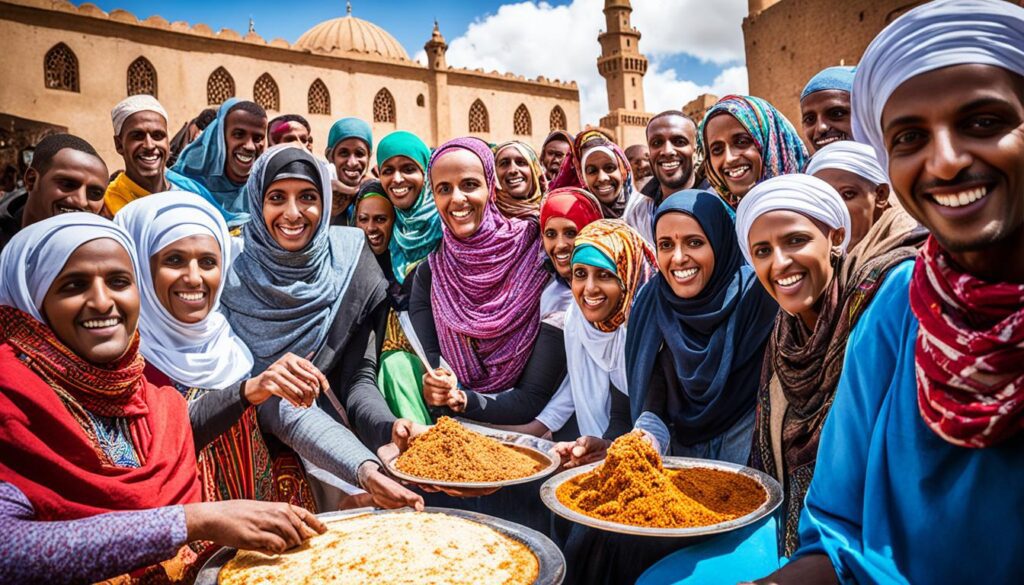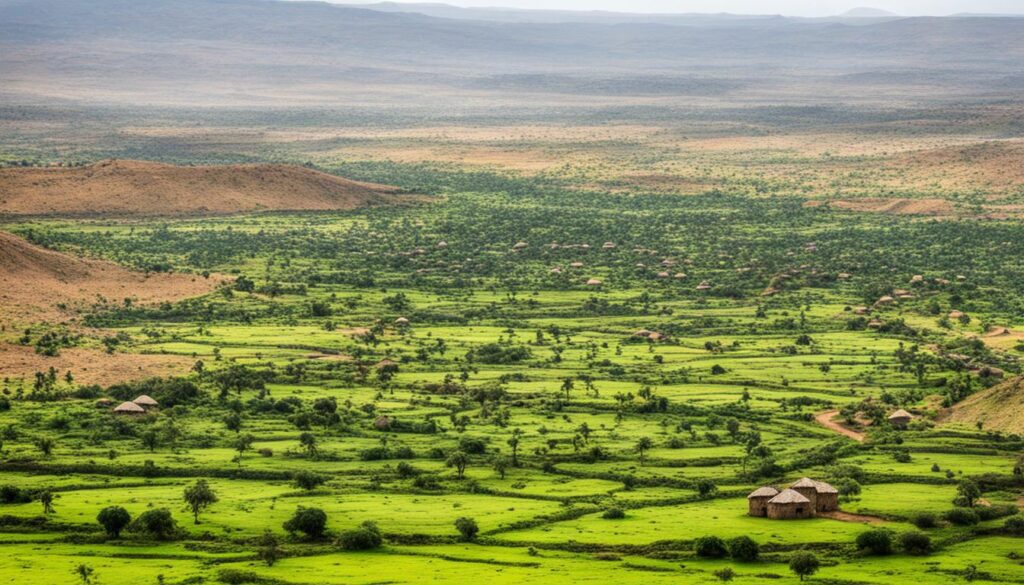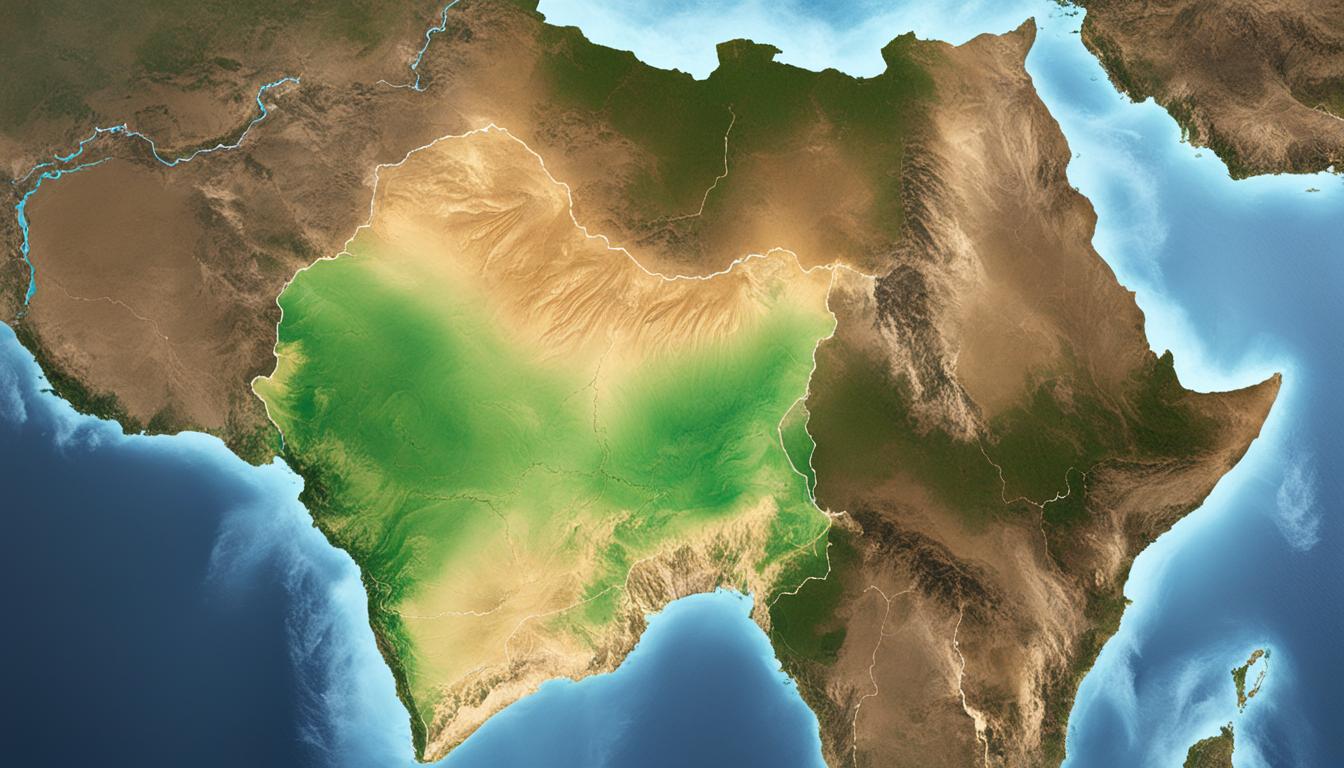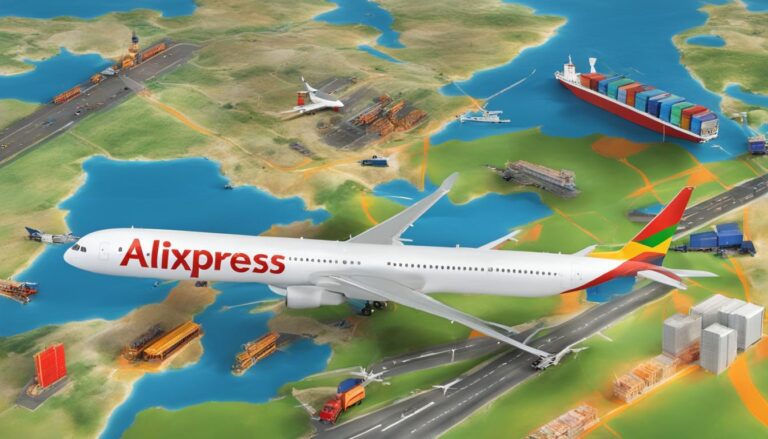Is Somalia in Ethiopia?
Did you know that Somalia is not located in Ethiopia? Despite their close proximity and historical connections, these two countries are separate entities with distinct borders and governments.
When discussing the relationship between Somalia and Ethiopia, it’s essential to understand their geographical locations and the complexities that have shaped their interactions over time.
Key Takeaways:
- Somalia and Ethiopia are neighboring countries, but they are not the same.
- Somalia is an independent country in the Horn of Africa, with its own government and territory.
- Ethiopia is a separate country situated to the west of Somalia.
- The border between Somalia and Ethiopia is approximately 1,600 kilometers long.
- Both countries have a shared history influenced by factors such as colonialism, territorial disputes, and economic interests.
The Relationship between Somalia and Ethiopia
Somalia and Ethiopia share a border and have had a long history of interaction. The relationship between the two countries has been influenced by factors such as colonialism, territorial disputes, political instability, and economic interests. While there have been periods of tension and conflict, there have also been efforts to improve relations and promote regional cooperation.
Throughout history, Somalia and Ethiopia have been neighboring countries in the Horn of Africa. The proximity between these two nations has played a significant role in shaping their relationship. Geopolitical factors, cultural ties, and economic interdependencies have all contributed to the dynamics between the two countries.
“The relationship between Somalia and Ethiopia is complex, with both cooperation and conflict defining their interactions,” highlighted Yusuf, a political analyst specializing in the Horn of Africa. “Historically, these countries have had territorial disputes, with border tensions periodically escalating. However, there have also been collaborative efforts in areas such as security cooperation and the fight against terrorism.”
It is noteworthy to mention that Somalia and Ethiopia have belonged to different colonial powers and have experienced different political trajectories. Ethiopia was never colonized, while Somalia was colonized by multiple European powers before gaining independence in 1960. These disparate historical experiences have undoubtedly influenced the dynamics of their relationship.
Over the years, regional stability has been a common goal for both countries. The Horn of Africa, which encompasses Somalia and Ethiopia, has faced challenges such as internal conflicts, terrorism, and the impact of climate change. In response to these shared challenges, there have been collaborative initiatives aimed at fostering regional peace and development.
A prominent example of regional cooperation is the Intergovernmental Authority on Development (IGAD), a regional organization comprising countries in the Horn of Africa. Somalia and Ethiopia are both members of IGAD and have participated in joint efforts to address regional issues such as conflict resolution, humanitarian assistance, and economic integration.
Despite the complexities and occasional conflicts, the relationship between Somalia and Ethiopia continues to evolve. With geopolitical shifts and changing dynamics in the Horn of Africa, there is a growing recognition of the importance of regional cooperation and peaceful coexistence between these neighboring countries.
The image above visually represents the historical and geographical context of the relationship between Somalia and Ethiopia, highlighting their neighboring positions in the Horn of Africa.
The Geographical Location of Somalia
When exploring the fascinating country of Somalia, its geographical location plays a crucial role in understanding its diverse landscape and its relationships with neighboring countries. Situated in the Horn of Africa, Somalia shares borders with Ethiopia to the west, Djibouti to the northwest, and Kenya to the southwest. This strategic positioning makes Somalia a vital hub in the region, connecting the continent to the Arabian Peninsula and beyond.
One significant aspect of Somalia’s geography is its proximity to Ethiopia, which spans approximately 1,600 kilometers. This extensive border signifies the close ties and interactions between these two nations, shaping their historical, cultural, and political landscapes.
Moreover, Somalia boasts a stunning coastline along the Indian Ocean to the east. The Somali Peninsula, known for its well-preserved coral reefs and pristine beaches, serves as a natural gateway for maritime trade and connectivity. This strategic coastal position has historically influenced Somalia’s interactions with regional and international powers.
Understanding the geographical location of Somalia is essential for comprehending its historical context, geopolitical dynamics, and regional significance. Let’s delve deeper into the complexities of the Somali-Ethiopian relationship, the cultural exchange, and the shared challenges they face.
The Horn of Africa: A Hub of Cultural Exchange
The Horn of Africa is a region known for its rich cultural heritage and diverse ethnic groups. Located at the meeting point of the African, Arabian, and Indian tectonic plates, this area has witnessed centuries of cultural exchange between various civilizations and communities. The close proximity between Somalia and Ethiopia has facilitated the blending of traditions, languages, and customs, leading to a vibrant and unique cultural tapestry.
“The Horn of Africa stands as a bridge between continents, connecting Africa, Arabia, and the Indian subcontinent through ancient trade routes and cultural exchanges.”
The geographical location of Somalia within the Horn of Africa has made it a focal point for trade, migration, and cultural diffusion. This interplay of diverse cultures has shaped the region’s identity and contributed to its resilience and unity.
Somali Population in Ethiopia

Ethiopia is home to a significant Somali population, particularly in the Somali Region. According to the 2008 census, there were approximately 4,560,000 ethnic Somalis in Ethiopia, making up around 6.2% of the total population.
The Somali population in Ethiopia is primarily concentrated in the Somali Region, where they have their own language and culture. This region serves as a vibrant hub for the Somali community, offering a sense of belonging and a platform to preserve their traditions and heritage.
The Somali people in Ethiopia, known as Ethiopian Somalis or Somalis in Ethiopia, have contributed to the cultural diversity and economic growth of the country. They engage in various sectors such as trade, agriculture, and livestock farming, showcasing their entrepreneurial skills and resilience.
The Ethiopian government recognizes and respects the rights of ethnic Somalis residing in Ethiopia, ensuring their representation and participation in the country’s political and social spheres. This inclusivity helps foster a sense of unity and harmony among different ethnic groups within Ethiopia.
Cultural Significance of Ethiopian Somalis
“We take pride in our Somali heritage and the rich cultural traditions that have been passed down through generations. Our language, clothing, music, and cuisine are all a testament to our identity as Ethiopian Somalis.”
Through cultural festivals, music, and art, Ethiopian Somalis showcase their vibrant culture to the wider Ethiopian community, celebrating diversity and promoting intercultural understanding. This cultural exchange fosters social cohesion and strengthens the bond between different ethnic groups within Ethiopia.
| Somali Population in Ethiopia | Percentage of Total Population |
|---|---|
| 4,560,000 | 6.2% |
Somali Region in Ethiopia

The Somali Region, also known as Deegaanka Soomaalida, is a regional state located in eastern Ethiopia. It is the second largest region in Ethiopia in terms of land area, covering a vast expanse of diverse landscapes and ecosystems. The Somali Region shares its borders with Somalia and the Ethiopian regions of Oromia, Afar, and Dire Dawa.
The capital city of the Somali Region is Jijiga, a bustling urban center that serves as the administrative and economic hub of the region. Jijiga is home to a vibrant mix of cultures and traditions, reflecting the rich diversity of the Somali people and other ethnic groups residing in the area.
The regional government of the Somali Region is structured into three branches: the executive, legislative, and judicial. These branches work together under the leadership of the Chief Administrator to govern and address the social, economic, and political needs of the region.
With its unique cultural heritage, picturesque landscapes, and strategic location, the Somali Region plays a significant role in the overall development and stability of Ethiopia. The region’s diverse communities work together to promote peace, prosperity, and social cohesion, contributing to the country’s overall progress.
Demographics of the Somali Region
The Somali Region, located in eastern Ethiopia, has a diverse population that contributes to its vibrant cultural landscape. According to 2017 data, the region is home to approximately 11,748,998 inhabitants, reflecting its significance in Ethiopia’s demographic makeup.
The majority of the population in the Somali Region is Somali, accounting for a significant portion of the region’s ethnic composition. Other ethnic groups, such as Amhara and Oromo, are also present, adding to the cultural diversity of the area.
The primary language spoken in the Somali Region is Somali, a Cushitic language widely used among the Somali population. This language serves as a means of communication, cultural preservation, and identity for the community.
Religion plays a crucial role in the Somali Region, with Islam being the dominant faith. Approximately 98.74% of the population adheres to Islam, impacting various aspects of everyday life, including social norms, customs, and religious practices.
The following table provides a comprehensive overview of the populations, ethnic composition, languages, and religions in the Somali Region:
| Population | Ethnic Composition | Languages Spoken | Religion |
|---|---|---|---|
| Approximately 11,748,998 | Majority Somali, with other ethnic groups such as Amhara and Oromo | Somali (primary language) | Islam (98.74% adherence) |
Conclusion
In conclusion, Somalia is a separate country located in the Horn of Africa and is not part of Ethiopia. While there is a significant Somali population in Ethiopia, particularly in the Somali Region, the two countries have distinct histories, borders, and governments.
Understanding the geographical location and the relationship between Somalia and Ethiopia is important for gaining a comprehensive perspective on the region. Somalia is bordered by Ethiopia to the west, Djibouti to the northwest, and Kenya to the southwest. It also has a coastline along the Indian Ocean to the east.
Despite their geographical proximity and shared border, Somalia and Ethiopia have had a complex relationship influenced by factors such as colonialism, territorial disputes, political instability, and economic interests. While there have been periods of tension and conflict, efforts to improve relations and promote regional cooperation have also been made.




